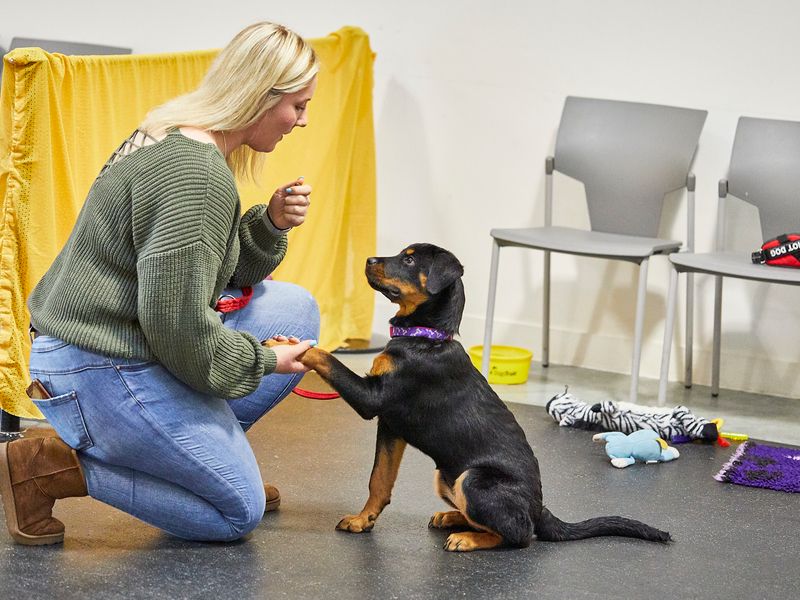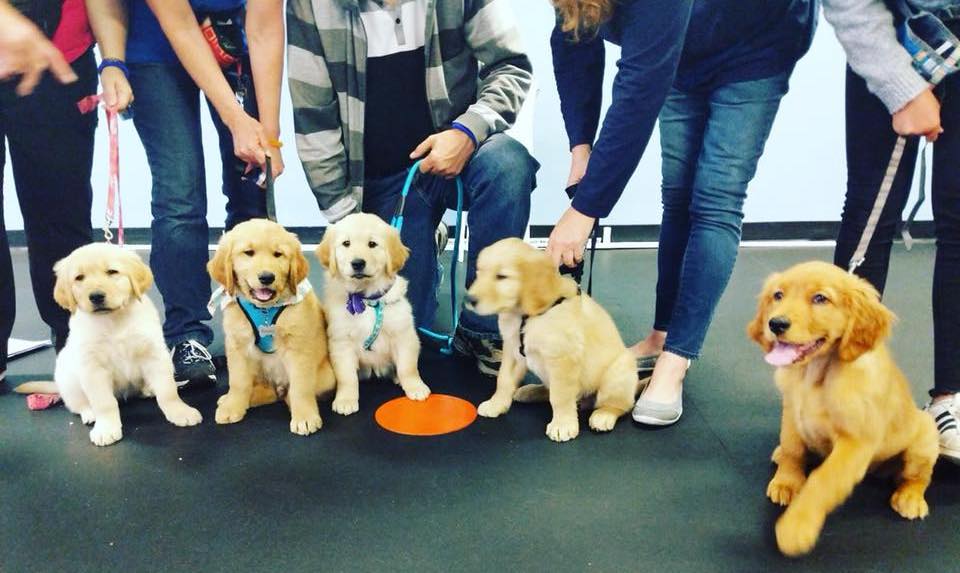Leading Puppy Educating Techniques to Make Sure a Mannerly Pet Dog
Reliable puppy training is vital for growing a mannerly companion, and different methods can substantially affect a pet's development. As we check out these techniques additionally, it comes to be clear that the success of pup training pivots on a mix of strategies that can change your pet dog's actions in impressive means.
Positive Reinforcement Strategies
Making use of favorable support strategies is essential for effective pup training, as it urges preferred habits with benefits rather than punishment. This approach takes advantage of the natural knowing processes of pets, enhancing etiquette by providing immediate and substantial incentives, such as treats, appreciation, or playtime. By associating favorable results with specific activities, pups are more probable to duplicate those habits in the future.
Effective favorable support involves timing and consistency. Benefits need to be given instantly after the preferred actions takes place to produce a clear link in the pup's mind. In addition, varying the types of benefits can keep a puppy's interest and motivation throughout the training process. For instance, some pups might react far better to spoken praise while others might choose a preferred toy or treat.

Uniformity in Educating Commands
Preserving consistency in training commands is crucial for strengthening the lessons found out via favorable support strategies. Pets thrive on routine and predictability, so making use of the very same spoken commands and hand signals for particular behaviors is vital. This uniformity assists puppies recognize what is expected of them, minimizing confusion and irritation for both the pet dog and the instructor.

Timing additionally plays a substantial duty in uniformity. Commands should be delivered quickly during training sessions and complied with promptly by positive reinforcement, such as deals with or appreciation. This prompt response helps solidify the organization in between the command and the wanted actions.
Integrating uniformity into training sessions will create a stable learning setting, advertising quicker proficiency of commands. Inevitably, a well-structured technique promotes a strong bond between the pup and its proprietor, causing a much more well-behaved and loyal pet dog.
Socializing With Other Pets
Socializing with various other pets is important for a puppy's development, as it aids them discover appropriate actions and communication skills in varied social contexts. Early interactions with various animals can significantly affect a young puppy's temperament and flexibility in different scenarios. When young puppies are exposed to a range of animals, they come to be a lot more confident and much less fearful, which can protect against potential behavior issues later on in life.

Moreover, observing body movement during interactions is essential. Show your puppy to identify signals from various other animals, such as indicators of playfulness or pain, fostering common great post to read respect and understanding. Routine socialization not just improves your puppy's social abilities but additionally adds to their total wellness, creating a much more harmonious living setting. To conclude, focusing on interactions with other pets will certainly yield a socially experienced and all-around pet.
Pet Crate Training Advantages
Acknowledging the countless advantages of cage training can substantially enhance both the young puppy's and proprietor's experience. Crate training gives a safe and safe environment for puppies, ensuring they feel secured when laid off. This complacency can substantially lower anxiousness and stress levels for both the proprietor and the pet dog.
Furthermore, crates work as a useful house-training tool. Puppies normally stay clear of staining their resting location, consequently motivating them to hold their bladder up until they are let outside. This instinct can quicken the housebreaking procedure, cultivating excellent routines early.
When not being watched,Crate training likewise aids in managing a pup's behavior - puppy training. By providing a marked area, owners can prevent devastating actions, such as chewing on furnishings or entering into harmful materials. Pet crates can be valuable during traveling, using a familiar area that can help soothe a young puppy in new settings.
Lastly, developing a crate regular encourages self-reliance, enabling puppies to discover how to be alone without concern. Overall, cage training is a reliable approach for promoting safety and security, serenity, and technique, bring about a well-adjusted, mannerly animal.
Leash Training Fundamentals
Leash training is a basic facet of liable pet ownership that guarantees a risk-free and delightful walking experience for both the pup and its owner. Proper leash training begins early, ideally throughout the puppy's socialization duration. When out in public., this training aids establish great routines and promotes positive behaviors.
To begin, select a comfy collar or harness that fits your young puppy well. Connect a durable leash, ensuring it is not also long, as this can bring about drawing and irregular behavior. Begin in a quiet environment to minimize interruptions and gradually introduce your pup to new environments.
Usage positive reinforcement strategies, such as deals with and appreciation, to motivate your puppy to stroll next to you. If your young puppy pulls, quit strolling and wait for them to go back to your side prior to proceeding. This instructs them that pulling will not generate find more information ahead movement. Uniformity is crucial; practice on a regular basis and stay client, as proficiency takes some time.
Additionally, integrate short training sessions with fun distractions to construct your young puppy's emphasis. With commitment and perseverance, leash training will certainly cause a hospitable companion, making walks delightful for both the young puppy and the proprietor.
Verdict
In final thought, utilizing efficient puppy training techniques is important for establishing a well-behaved animal. Overall, these approaches jointly advertise an unified connection between puppies and their proprietors.
As we discover these techniques even more, it ends up being clear that the success of puppy training pivots on a mix of techniques that can change your pet dog's actions in exceptional methods.
Using favorable support techniques is important for effective puppy training, as it encourages preferred actions via benefits instead than punishment.Crate training additionally helps in handling a pup's habits when without supervision.Leash training is a fundamental facet of accountable pet possession that makes sure a safe and delightful walking experience for both the young Look At This puppy and its owner.In final thought, using effective pup training techniques is critical for creating a well-behaved pet dog.
Comments on “Puppy Training Tips for First-Time Owners: Building a Strong Bond with Your Dog”